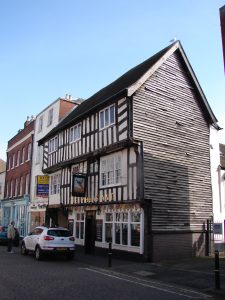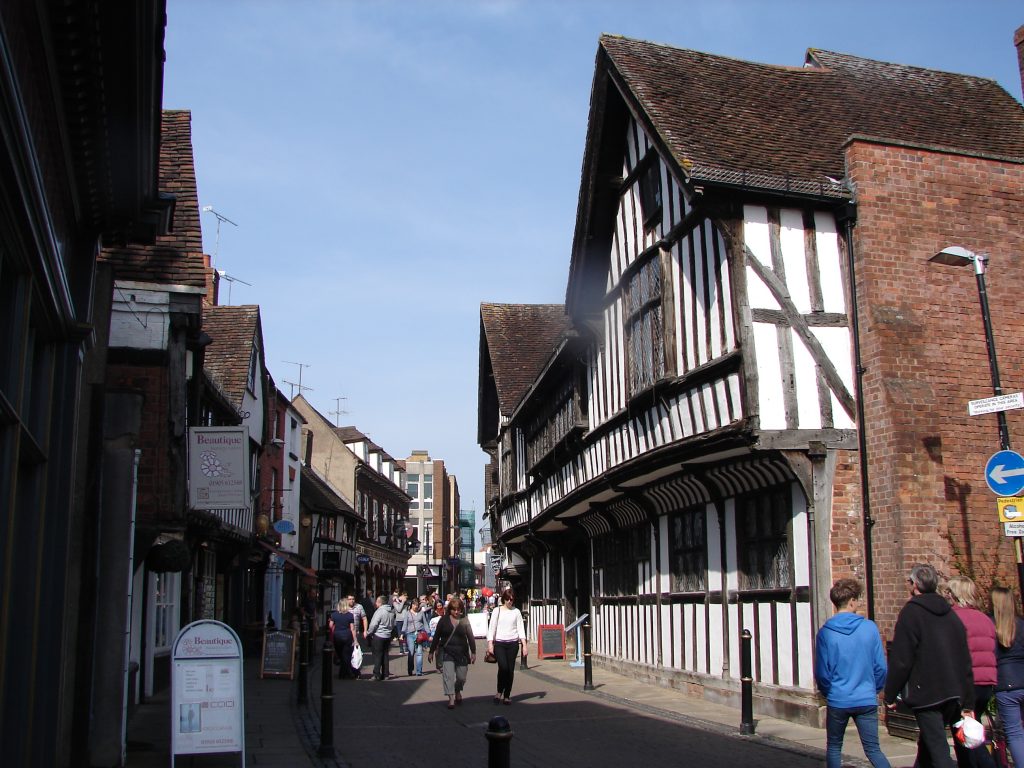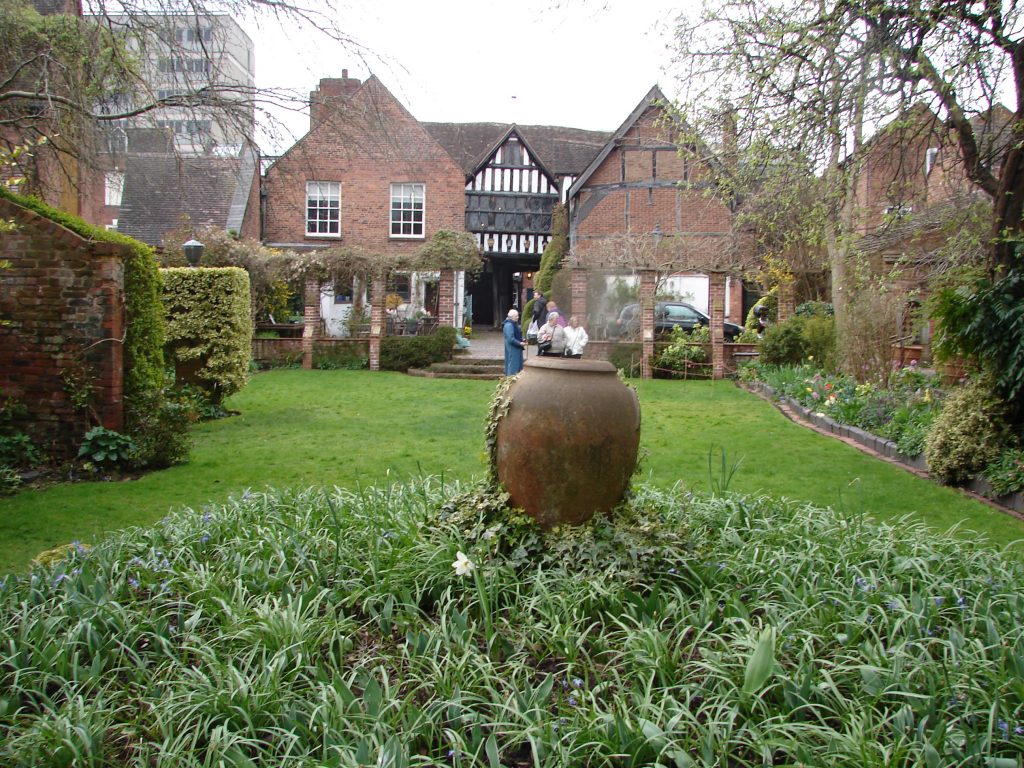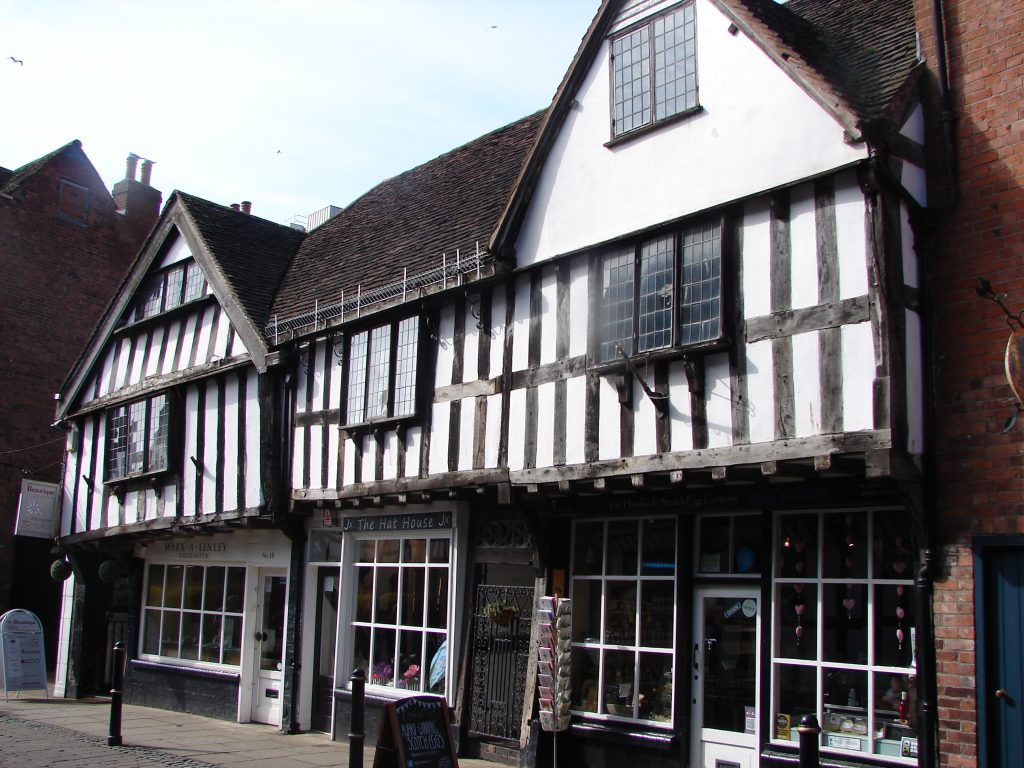 Greetings! Today, we continue to examine some of the topics which arise in King Richard’s Sword, the sixth book in my Lady Apollonia West Country Mysteries. We are focusing on the ancient city of Worcester, the setting for the novel. In my last post, I began to discuss the medieval history of Worcester from the time of the Norman Conquest in AD 1066; this will continue that history.
Greetings! Today, we continue to examine some of the topics which arise in King Richard’s Sword, the sixth book in my Lady Apollonia West Country Mysteries. We are focusing on the ancient city of Worcester, the setting for the novel. In my last post, I began to discuss the medieval history of Worcester from the time of the Norman Conquest in AD 1066; this will continue that history.
I have mentioned that Worcester was well situated on a trade route from England to Wales. In the medieval period, guilds began to develop in some trades. The Guild of Merchants in Worcester was incorporated in the 13th century and was the dominant guild by the time of my novel.
There are many houses remaining in Worcester from the medieval period. A number of them were built by wealthy merchants and inspired my image of the city as I wrote the story. For example, an ancient jettied house on New Street is shown above on the left.
Several of these medieval houses are on Friary Street and one, in particular, stands out. It is called Greyfriars House and was my inspiration for Aust House in my story. This house and Friary Street are named for the defunct Greyfriars Friary which was in this part of the city. It was once thought that Greyfriars House served guests of the priory, but it was, in fact, built by a merchant. The building is now run by the National Trust. Its exterior is shown on the right side of the picture above while its back garden appears below. Another building on Friary Street is shown at the end of this posting.
Worcester Cathedral is a glorious medieval building with both Norman and Gothic architecture in its construction. I will deal with it specifically in the next posting. Other city buildings from the medieval period include the Commandery which I mentioned in my last posting.
There was a Jewish presence in Worcester, but they were much persecuted in the 13th century and expelled in AD 1275. This had implications for my story because I create a Worcester character in King Richard’s Sword who becomes friends with my heroine, Lady Apollonia. She learns that he is troubled by the recent revelation that one of his ancestors was a Jew who converted to Christianity to prevent being expelled in the 13th century.
Another implication of the Jewish expulsion involves the lending of money. Before AD 1275, the Jews in Worcester had been useful as money lenders because the Roman Catholic Church frowned on Christians lending money and charging interest. As the merchant class was growing in the 14th century people needed to borrow money to grow their businesses. When Jews were no longer resident in England, the only lenders were individuals who did not feel bound by the Christian sanction against lending. This led to some despicable characters who practiced usury, the lending of money at unreasonably high rates of interest. Some of the villains in my story were usurious and took advantage of Worcester people who needed money, trapping them in the exorbitant interest rates they charged.
Please join us next time when I will focus on the ancient history of Worcester Cathedral.


